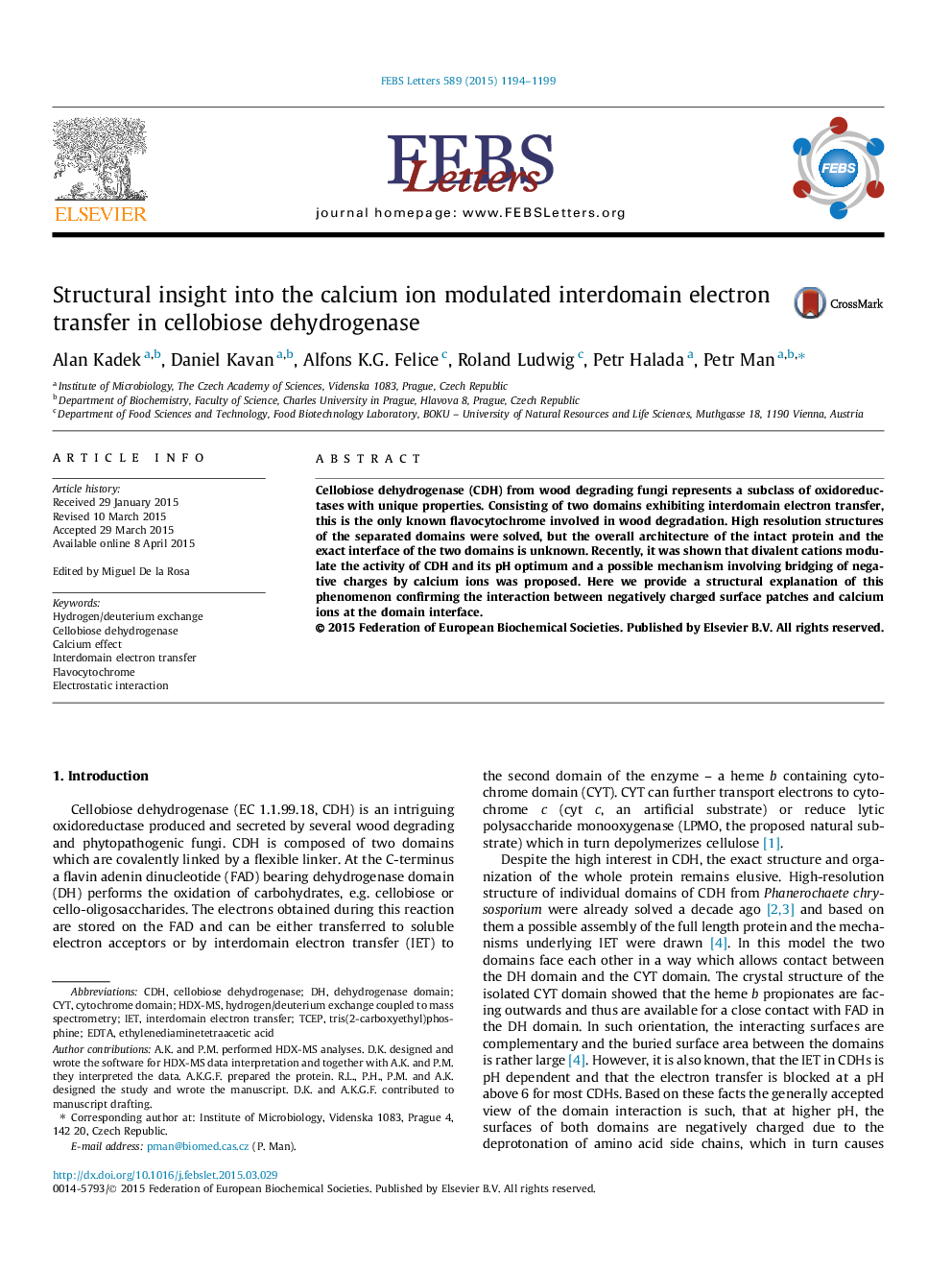| Article ID | Journal | Published Year | Pages | File Type |
|---|---|---|---|---|
| 10870299 | FEBS Letters | 2015 | 6 Pages |
Abstract
Cellobiose dehydrogenase (CDH) from wood degrading fungi represents a subclass of oxidoreductases with unique properties. Consisting of two domains exhibiting interdomain electron transfer, this is the only known flavocytochrome involved in wood degradation. High resolution structures of the separated domains were solved, but the overall architecture of the intact protein and the exact interface of the two domains is unknown. Recently, it was shown that divalent cations modulate the activity of CDH and its pH optimum and a possible mechanism involving bridging of negative charges by calcium ions was proposed. Here we provide a structural explanation of this phenomenon confirming the interaction between negatively charged surface patches and calcium ions at the domain interface.
Keywords
Related Topics
Life Sciences
Agricultural and Biological Sciences
Plant Science
Authors
Alan Kadek, Daniel Kavan, Alfons K.G. Felice, Roland Ludwig, Petr Halada, Petr Man,
